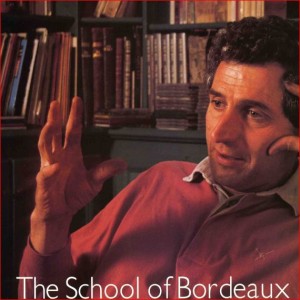Reading an article by Eric Asimov prompted me to give my own take on “aged” wine. Asimov talks about the joy of finding already aged Rioja Reservas that the Spanish wineries in their wisdom hold in their own cellars well past the legal 3 year minimum, so we can enjoy them straight from the wine store shelf. Worth a read.
And talking about “aged” wine, I have to mention the bottle of Quintay Chardonnay Holly and I opened the other night. Nothing too special about a Chilean Chardonnay from Casablanca Valley, except that this one was 10 years old. And from organic grapes. And no longer produced. And cost about $12. And delicious! Not over the hill, not oxidized, not maderized; a lovely deep golden color with good freshness and acidity, subtle nuances of the citrus of its youth but with a rich creaminess in the texture that it didn’t have last time I had a bottle (at least 5 years ago).
And finally, sadly, I think it’s the last bottle we had left. Probably the only one left anywhere on earth. It’s sad that nobody but Holly, myself and our friend Brenda got to taste it, sad that wines like this are almost always drunk the day they’re bought. Most sad, that Don Toribio whose grapes were in this bottle gave up winemaking and went back to his dairy farming.
But enough digression, we were talking about Mr. Asimov. Eric mentions Barolo, the one wine he feels still hasn’t got on board the current style of making wines that are quaffable right out of the barrel. I have to agree; not only does it take a long time to soften up, but regretably it’s really hard to find older Barolos for sale. Even in the village of Barolo itself the restaurants can’t hang on to their stocks long enough to age them, even if they wanted to (and most restaurants would far rather keep their wines turning over than have to inventory all those bottles for years).
Maybe that’s why you see so many bottles stored upright in the dining rooms of the restaurants there… are they trying to get a little warmth and air past the cork to accelerate the process??
But there’s more to this. I have no doubt that not only have winemaking techniques developed, but old philosophies have changed (despite the adamant denials of Grand Cru Bordeaux winemakers) to accommodate the fact of life that most wine gets drunk just a few hours after it’s purchased. And by and large, this is one symptom of a steady improvement that gives wine a far longer window of enjoyment.
Ripening is the most obvious first step. Whether it’s global warming, reduced yields, clonal selection, irrigation control, green harvest, de-leafing or whatever, the fact is that wine grapes are now generally in a better state of equilibrium between “ripeness” and “maturity” when they’re harvested. Consequently: less harsh acidity, softer but more complex tannins, more forward fruit, etc.
Then there are things like doing malolactic fermentation in barrel, increased lees contact, barrel choice, etc. – lots of complicated wine-tech stuff that we don’t need to go into here.
Bottom line: in general wine is drinkable far earlier than it used to be. Not only drinkable, but enjoyable – and there is a difference. But most well-made wines are still capable of aging, even if they do taste good in their youth. This is something that the old “School of Bordeaux” had a hard time accepting for a while, according to Francois Mitjavile of Tertre Roteboeuf in St. Emilion, whose opinion I highly respect. If a wine tasted too nice on release, it couldn’t possibly have the potential to age… These days though, I hear far less talk in Bordeaux’s Grand Crus wineries about how sacrilegious it is to make wines that people can actually enjoy before they’re 10 years old. Tasting barrel samples and new releases is much less like hard work than it was when I started visiting Bordeaux in the early 1990’s. Whether today’s precociously delicious wines will really produce classics that last a century is something our grandkids will have to judge, but it seems highly likely that many top wines have that potential.
So, if wine today tastes good young, why would we want to age it at all, unless you’re cellaring it to speculate? It takes up space, ties up cash for years, and stands the risk of damage from mishaps in the cellar or from a bad cork. Then you have to worry about choosing the right moment to open it, and maybe waiting too long till it’s over the hill.
Logical thinking perhaps, but it misses so much.
As great as a wine may be when it’s young, almost invariably it will either improve, or at least change, with age. And one of the most interesting and satisfying parts of being a wine enthusiast has to be experiencing that bottle at different stages. And at each of those stages, it fits a different purpose – different occasions, different company, different food, different atmosphere… all with the same wine.
So let’s enjoy those Riojas young, now that we can. But let’s also stash a few bottles away with our Barolos, taste them in their various characters of age, even take the risk of letting them go too far. Now and then we’re rewarded with a bottle like the Quintay; something surprising, delicious and perhaps most important, totally unique, a special moment in life that captures the essence of the mystery of wine – in the almost certain knowledge that nobody else will ever experience it.




